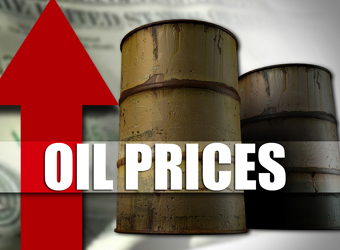U.S. crude ended Tuesday’s session up 78 cents, or 1.2 percent, at $63.55, posting a 3 percent weekly gain.
Brent crude, the global benchmark, was up 56 cents at $66.95 by 1:10 p.m. ET and was on track for a roughly 3 percent gain for the week.
Crude rebounded from an early loss after the shutdown of the El Feel oilfield in Libya, which produces 70,000 barrels per day of crude. Production in the OPEC-member has been running at about 1 million bpd, although it remains volatile due to unrest.
“Libya is another outage,” said John Kilduff, partner at investment manager Again Capital in New York. “This market has benefited from a series of them over the past several months now, whether it’s the Keystone, the North Sea, and now this.”
Prices were also buoyed by comments from Saudi Arabia’s energy minister Khalid al-Falih, who said that oil markets are rebalancing and that he expected inventories to continue declining this year.
“The oil markets, it’s clear, are rebalancing,” Falih, who is on a visit to India, said. “Many agencies have documented the decline in inventories and I think that’ll continue in 2018.”
The Organization of the Petroleum Exporting Countries and other producers including Russia agreed to cut output by about 1.8 million bpd from January 2017, removing almost 2 percent of global supply from the market, to end a supply glut that had triggered an oil price collapse.
OPEC wants to reduce inventories held by industrialized nations to their five-year average.
On Thursday, data from the Energy Information Administration showed that U.S. crude inventories unexpectedly fell 1.6 million barrels last week. Crude stocks at the Cushing, Oklahoma, delivery hub for U.S. futures fell 2.7 million barrels last week.
“The inventory levels are coming down, in the U.S. too,” Again’s Kilduff said. “That’s why there’s definitely a bullish narrative around the market right now.”
Rising U.S. production has hurt OPEC’s efforts to drain supplies. Output rose to its highest since the 1970s in late 2017, and by the end of 2018 is expected to top 11 million bpd.
U.S. crude exports are rising with output. Thursday’s EIA data showed exports of U.S. crude jumped to just above 2 million bpd, close to a record 2.1 million hit in October.
“Robust oil production in the U.S. will continue to cap price gains,” said Abhishek Kumar, senior energy analyst at Interfax Energys Global Gas Analytics in London.
The U.S. oil rig count, an indicator of future production, rose for a fifth straight week, a report from oilfield service firm showed. U.S. drillers added just one oil rig this week, bringing the total to 799, after the count rose by 51 rigs over the prior four weeks.
Source: Reuters


